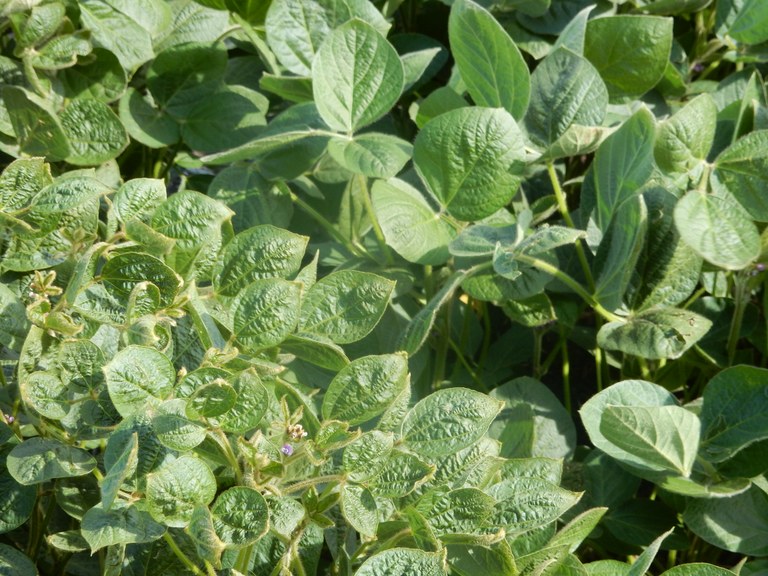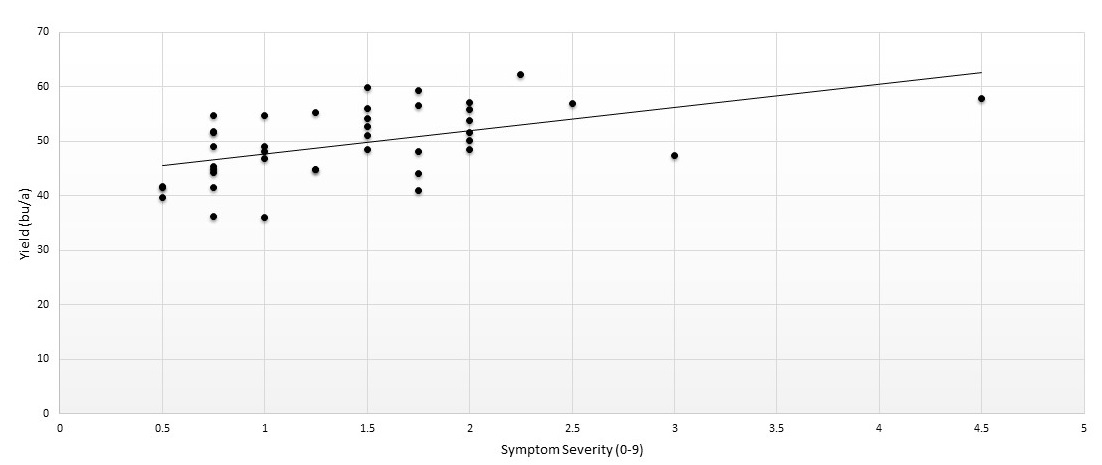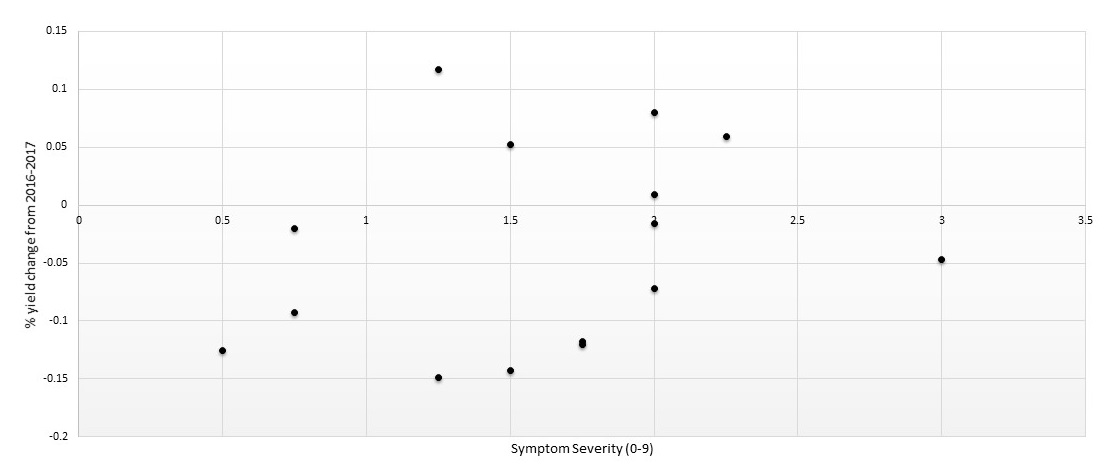Soybean Dicamba Tolerance Across Varieties
This past summer, PGR (plant growth regulator) symptoms showed up in many soybean fields. In many cases, dicamba drift was the likely cause of the PGR symptoms being expressed. While some instances of drift injury were clear, with severe stunting, delayed maturity, and reduced yields, many instances were less severe with leaf cupping, alligator skin, but no growing point damage. The difficult task this winter will be for many people to determine if there was any yield damage due to the less severe symptoms. One of the confounding factors is the observed differences in symptoms between soybean varieties. At the CREC, we rated the severity of PGR symptoms for varieties in our soybean variety trials. The varieties were given a score of 0-9 based on symptom severity. A 0 indicated a perfectly healthy plant, while a 9 indicated severe growing point damage and stunting. At Carrington symptoms were relatively light in most cases with only a handful of plots reaching a score of 5. At a 5, there was severe leaf cupping, along with some leaf necrosis along the edges, but no growing point damage
In each trial, there were several plots and varieties with no symptoms. The highest percent of PGR-affected plots was in the Liberty Link trial, where 83% of plots displayed symptoms, compared to the low of 66% of plots in the conventional trial. Roughly half of all plots which had symptoms were categorized as having only minor leaf cupping (a score of 1).

Two Liberty Link soybean varieties with different levels of PGR symptoms.
It is difficult to estimate the effects of symptoms on soybean yields by only looking at a single year. In Figure 1, it appears that yield is gradually increasing as the severity of symptoms increases. This initially indicates that the expression of symptoms has caused a yield increase. However, a more accurate method to test the effects of symptoms would be to compare 2017 to historical data. There were several varieties tested in both 2016 and 2017 at Carrington. For each year we determined if the yield increased or decreased compared to the average. This was plotted against symptom severity in 2017 (Figure 2). With this comparison, there was no relationship between symptom severity and change in yield. Statistically, this indicates that varieties with more symptoms did not perform different than varieties without symptoms. In Figure 1, yields seems to increase with symptom severity, but this could be linked to inherent production potential. Varieties that were more affected by PGR symptoms may have been varieties that were growing more vigorously at the time of symptom expression, thus more prone to any factor causing a PGR response. Essentially, dicamba exposure was not increasing yields but rather varieties with higher yield potential were more susceptible to the effects of dicamba and the level of injury was not enough to decrease yield.

Figure 1. Soybean variety performance compared to plant growth regulator (PGR) syptom severity.

Figure 2. Year to year change in variety performance based on PGR symptom expression.
If dicamba symptoms were more severe, such as plants with growing point injury and/or stunted growth, yields would surely decline. Even though varieties in our trials differed in the expression of PGR symptoms, with only leaf cupping and blistering, there did not appear to be any consistent positive or negative yield response based on variety.
Mike Ostlie, Ph. D.
mike.ostlie@ndsu.edu
Research Agronomist


